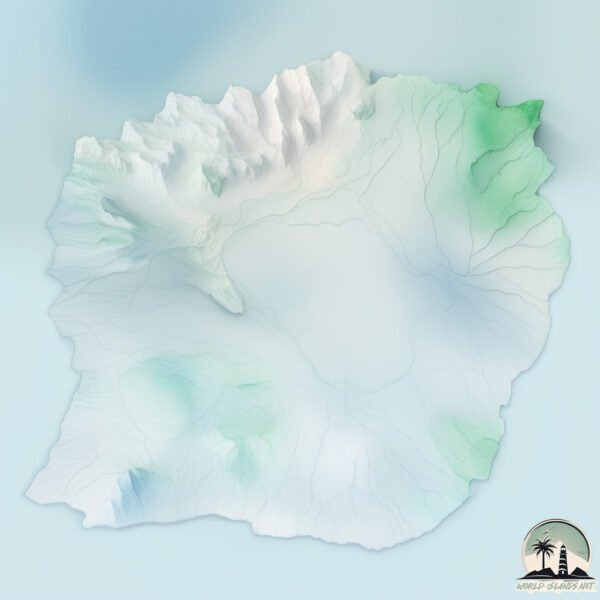Santa Maria-327891

Welcome to Santa Maria, a Tropical island in the Caribbean Sea, part of the majestic Pacific Ocean. This guide offers a comprehensive overview of what makes Santa Maria unique – from its geography and climate to its population, infrastructure, and beyond. Dive into the details:
- Geography and Size: Explore the island’s size and location.
- Climate and Weather: Weather patterns and temperature.
- Topography and Nature: Uncover the natural wonders of the island.
- Infrastructure and Travelling: Insights on reaching, staying, and making the most of your visit.
- News and Headlines: Latest News.
Geography and size of Santa Maria
Size: 174.5 km²
Coastline: 62.3 km
Ocean: Pacific Ocean
Sea: Caribbean Sea
Continent: South America
Santa Maria is a Large Island spanning 174 km² with a coastline of 62 km.
Archipel: Galapagos Islands – An Ecuadorian archipelago in the Pacific Ocean, famous for their unique wildlife and as a key location for evolutionary studies.
Tectonic Plate: North America – Covers North America and parts of the Atlantic and Arctic Oceans, characterized by diverse geological features and varying levels of seismic activity.
The geographic heart of the island is pinpointed at these coordinates:
Latitude: 15.71921499 / Longitude: -68.56193412
Climate and weather of Santa Maria
Climate Zone: Tropical
Climate Details: Tropical Savanna, Wet
Temperature: Hot
Climate Characteristics: Defined by distinct wet and dry seasons with high temperatures year-round. Pronounced rainfall occurs during the wet season, while the dry season is marked by drought.
Topography and nature of Santa Maria
Timezone: UTC-06:00
Timezone places: America/Chicago
Max. Elevation: 445 m
Mean Elevation: 155 m
Vegetation: Open Woodland
Tree Coverage: 36%
The mean elevation is 155 m. The highest elevation on the island reaches approximately 445 meters above sea level. The island is characterized by Hills: Gently sloping landforms with rounded tops, having a maximum elevation between 200 and 500 meters. Hills contribute to a varied landscape on islands.
Dominating Vegetation: Open Woodland
Characterized by sparsely distributed trees with open canopy allowing sunlight to penetrate, supporting grasses and shrubs underneath. Often found in drier or transitional environments. Santa Maria has a tree cover of 36 %.
Vegetation: 16 vegetation zones – Exceptionally Diverse Island
Islands with more than ten vegetation zones are among the most ecologically rich and varied in the world. These islands are akin to miniature continents, boasting an incredible array of ecosystems. The sheer range of habitats, from high peaks to deep valleys, rainforests to deserts, creates a mosaic of life that is unparalleled. They are crucial for conservation and ecological studies.
Infrastructure and Travelling to Santa Maria
Does the island have a public airport? yes.
Santa Maria has a public and scheduled airport. The following airports are located on this island: Santa Maria Airport.
Does the island have a major port? no.
There are no major ports on Santa Maria. The closest major port is VILA DO PORTO, approximately 1 km away.
The mean population of Santa Maria is 21 per km². Santa Maria is Gently Populated. The island belongs to Ecuador.
The name of the island resonates across different cultures and languages. Here is how it is known around the world: Arabic: سانتا ماريا; German: Santa Maria; Spanish: Isla de Santa María; French: Santa Maria; Portuguese: Santa Maria; Russian: Санта-Мария; Chinese: 聖瑪麗亞島
Continuing your journey, San Ignacio is the next notable island, situated merely km away.
Drone video shows Milton damage on Anna Maria Island, Fla.



Ecuador is classified as Emerging region: MIKT: Mexico, Indonesia, South Korea, and Turkey – Economies recognized for their development potential and emerging market status. The level of income is Upper middle income.
News – Latest Updates and Headlines from Santa Maria
Stay informed with the most recent news and important headlines from Santa Maria. Here’s a roundup of the latest developments.
Please note: The data used here has been primarily extracted from satellite readings. Deviations from exact values may occur, particularly regarding the height of elevations and population density. Land area and coastline measurements refer to average values at mean high tide.
